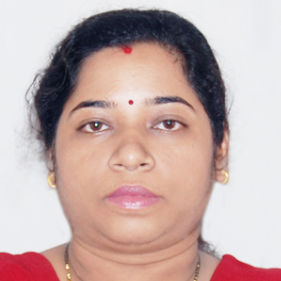International Journal of Intelligent Systems and Applications (IJISA)
IJISA Vol. 7, No. 5, 8 Apr. 2015
Cover page and Table of Contents: PDF (size: 376KB)
Author(s)
Index Terms
Nonlinear System, Adaptive System, Adaptive Inverse Model, Filter-Bank
Abstract
This paper proposes nonlinear adaptive filter-bank (NAFB) based algorithm for inverse modeling of nonlinear systems. Inverse modeling has been an important component for sensor linearization, adaptive control, channel equalization in communication system and active noise control. Under practical situations, the plant/system behaves nonlinearly which can be modeled as both parallel and cascaded structures of linear and nonlinear transfer functions. These linear and nonlinear transfer functions can be either static or dynamic, time variant or time invariant. The proposed NAFB algorithms are applied to generate the inverse model of different types of nonlinear systems and their convergence performances are evaluated. These nonlinear inverse models can be suitably applied to many engineering applications.
Cite This Paper
Prachee Patnaik, Debi Prasad Das, Santosh Kumar Mishra, "Adaptive Inverse Model of Nonlinear Systems", International Journal of Intelligent Systems and Applications(IJISA), vol.7, no.5, pp.40-47, 2015. DOI:10.5815/ijisa.2015.05.06
Reference
[1]J.C. Patra, G. Panda, R. Baliarsingh, “Artificial neural network-based nonlinearity estimation of pressure sensors”, Instrumentation and Measurement, IEEE Transactions, vol. 3, pp. 874-881, Dec 1994, doi : 10.1109/19.368082
[2]N.I. Khachab, M. Ismail, “Linearization techniques for nth-order sensor models in MOS VLSI technology”, IEEE Transactions on circuits and systems, vol. 38, pp. 1439 - 1450, December 1991, doi: 10.1109/31.108498.
[3]S. K. Mishra, G. Panda, D. P. Das, “A novel method of extending the linearity range of linear variable differential transformer using artificial neural network,” IEEE Transactions on Instrumentation and Measurement, vol. 59, no. 4, pp. 947–953, April 2010, doi: 10.1109/TIM.2009.2031385.
[4]S. Das, D. P. Das, S. K. Behera, “Enhancing the linearity of LVDT by two-stage functional link artificial neural network with high accuracy and precision”, in proc. IEEE Conference ICIEA2013, Melbourne 2013, pp. 1358-1363, doi: 10.1109/ICIEA.2013.6566578.
[5]C. Jongsoo, A. C. C. Lima, S. Haykin, “Kalman filter-trained recurrent neural equalizers for time-varying channels”, Communications, IEEE Transactions, vol. 53, pp. 472-480, March 2005, doi: 10.1109/TCOMM.2005.843416.
[6]S. Chen, B. Mulgrew, P. M. Grant, “A clustering technique for digital communications channel equalization using radial basis function networks”, IEEE Trans. Neural Networks, vol. 4, pp. 570-590, July 1993, doi: 10.1109/72.238312.
[7]G. Das, P. K. Pattnaik, and S. K. Padhy. "Artificial Neural Network trained by Particle Swarm Optimization for non-linear channel equalization", Expert Systems with Applications vol. 41 (7), pp. 3491-3496, (2014), doi: 10.1016/j.eswa.2013.10.053.
[8]H. Kressel and eds., Semiconductor Devices for Optical Communication, (Topics in Applied Physics vol. 39). New York: Springer-Verlag, 1980.
[9]X. N. Fernando and A. B. Sesay, “Higher order adaptive filter based predistortion for nonlinear distortion compensation of radio over fiber links”, in Proc. of the IEEE International Conference on Communications, 2000, pp. 367–371, doi: 10.1109/ICC.2000.853283.
[10]L. Gan, Adaptive Digital Predistortion of Nonlinear Systems, Doctoral Thesis, Graz University of Technology, Austria, 2009.
[11]M. Shafiq, S. Akhtar, “Inverse model based adaptive control of magnetic levitation system”, IEEE Control Conference, 5th Asian, vol. 3, pp. 1414 – 1418, July 2004.
[12]B. Widrow, M. Bilello, “Adaptive inverse control”, in proc. IEEE International Symposium on Intelligent Control, pp. 1-6, August 1993, doi: 10.1109/ISIC.1993.397732.
[13]R. Hedjar, "Online adaptive control of non-linear plants using neural networks with application to temperature control system", Journal of King Saud University - Computer and Information Sciences, vol. 19, pp. 75–94, 2007, doi: 10.1016/S1319-1578(07)80005-X.
[14]L. Chen, X. Wang, and W. L. Xu. "Inverse transmission model and compensation control of a single-tendon–sheath actuator", IEEE Trans. Industrial Electronics, vol. 61, no. 3, pp. 1424-1433, 2014, doi: 10.1109/TIE.2013.2258300.
[15]S. K. Nanda, S. Panda, P. R. S. Subudhi, and R. K. Das. "A novel application of artificial neural network for the solution of inverse kinematics controls of robotic manipulators", International Journal of Intelligent Systems and Applications (IJISA) vol. 4, no. 9, pp. 81-91, August 2012.
[16]M. Bouchard, Feng Yu, “Inverse structure for active noise control and combined active noise control/sound reproduction systems”, IEEE Trans. Speech and Audio Processing, , vol. 9, pp. 141-151, February 2001, doi: 10.1109/89.902280.
[17]D.Zhou,V.DeBrunner, “Efficient adaptive nonlinear filters for nonlinear active noise control”, IEEE Trans. Circuits Syst. I, Reg. Papers vol 54 no.3, 2007, pp. 669–681, doi: 10.1109/TCSI.2006.887636.
[18]G.L. Sicuranza, A. Carini, “A generalized FLANN filter for nonlinear Active noise control”, IEEE Trans. Audio, Speech, and Language Processing, vol. 19 , pp. 2412 – 2417, November 2011, doi: 10.1109/TASL.2011.2136336.
[19]G.L. Sicuranza, A. Carini, “On the BIBO Stability Condition of Adaptive Recursive FLANN Filters With Application to Nonlinear Active Noise Control”, IEEE Trans. Audio, Speech, and Language Processing, vol. 20, pp. 234 - 245, January 2012, doi: 10.1109/TASL.2011.2159788.
[20]D.P. Das, D.J. Moreau, B.S. Cazzolato, "Adjoint nonlinear active noise control algorithm for virtual microphone”, Mechanical Systems and Signal Processing (Elsevier) Volume 27, pp. 743–754, February 2012, doi: 10.1016/j.ymssp.2011.09.012.
[21]S. Chen, and S. A. Billings “Neural networks for nonlinear dynamic system modelling and identification”, International Journal of Control, vol. 56, no. 2, pp. 319 – 346, 1992, doi: 10.1080/00207179208934317.
[22]F. Guo, "A new identification method for Wiener and Hammerstein systems" vol. 6955. FZKA, 2004.
[23]S. K. Behera, D. P. Das, B. Subudhi, "Functional link artificial neural network applied to active noise control of a mixture of tonal and chaotic noise", Applied Soft Computing (Elsevier), vol. 23, pp. 51–60, October 2014, Available online 13 June 2014
[24]S.B. Behera, D.P. Das, N.K. Rout, "Nonlinear feedback active noise control for broadband chaotic noise" Applied Soft Computing (Elsevier), vol. 15, pp. 80–87, February 2014.
[25]D.P. Das, D.J.. Moreau, B.S. Cazzolato, “Nonlinear active noise control for headrest using virtual microphone control,” Control Engineering Practice (Elsevier), vol. 21, no. 4, pp. 544–555, April 2013
[26]D. P. Das, S. R. Mohapatra, A. Routray and T. K. Basu, “Filtered-s LMS algorithm for multichannel active noise control of nonlinear noise processes” IEEE Trans. on Speech and Audio Processing, Volume 14, no. 5, pp. 1875-1880, September 2006
[27]D. P. Das, G. Panda, “Active mitigation of nonlinear noise processes using a novel filtered-s lms algorithm,” IEEE Trans. on Speech and Audio Processing, vol. 12, no. 3, May 2004, pp.313 – 322.


